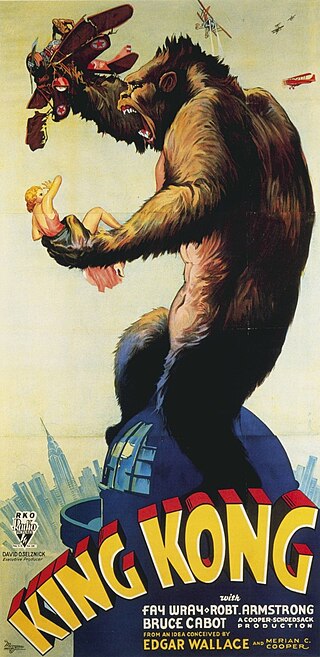
King Kong is a 1933 American pre-Code adventure romance monster film directed and produced by Merian C. Cooper and Ernest B. Schoedsack, with special effects by Willis H. O'Brien and music by Max Steiner. Produced and distributed by RKO Radio Pictures, it is the first film in the King Kong franchise. The film stars Fay Wray, Robert Armstrong, and Bruce Cabot. The film follows a giant ape dubbed Kong who is offered a beautiful young woman as a sacrifice.
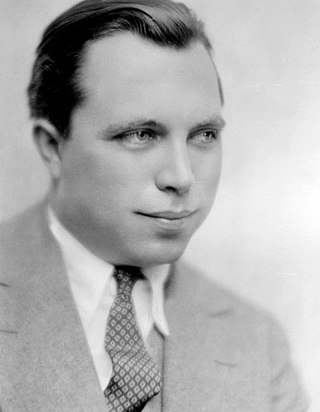
King Wallis Vidor was an American film director, film producer, and screenwriter whose 67-year film-making career successfully spanned the silent and sound eras. His works are distinguished by a vivid, humane, and sympathetic depiction of contemporary social issues. Considered an auteur director, Vidor approached multiple genres and allowed the subject matter to determine the style, often pressing the limits of film-making conventions.

Caligula is a 1979 erotic historical drama film about the rise and fall of Roman Emperor Caligula. The film stars Malcolm McDowell in the title role, alongside Teresa Ann Savoy, Helen Mirren, Peter O'Toole, John Steiner, and John Gielgud.

Brigham Young is a 1940 American biographical western film starring Tyrone Power, Linda Darnell and Dean Jagger that describes Young's succession to the presidency of the Church of Jesus Christ of Latter-day Saints after founder Joseph Smith was assassinated in 1844. The supporting cast features Brian Donlevy, Jane Darwell, John Carradine, Mary Astor, Vincent Price and Tully Marshall.
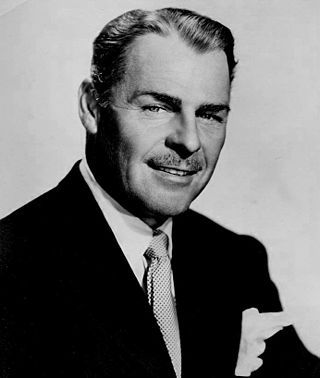
Waldo Brian Donlevy was an American actor, who was noted for playing dangerous and tough characters. Usually appearing in supporting roles, among his best-known films are Beau Geste (1939), The Great McGinty (1940) and Wake Island (1942). For his role as the sadistic Sergeant Markoff in Beau Geste, he was nominated for the Academy Award for Best Supporting Actor.

Ben-Hur is a 1959 American religious epic film directed by William Wyler, produced by Sam Zimbalist, and starring Charlton Heston as the title character. A remake of the 1925 silent film with a similar title, it was adapted from Lew Wallace's 1880 novel Ben-Hur: A Tale of the Christ. The screenplay is credited to Karl Tunberg, but includes contributions from Maxwell Anderson, S. N. Behrman, Gore Vidal, and Christopher Fry. The cast also features Stephen Boyd, Jack Hawkins, Haya Harareet, Hugh Griffith, Martha Scott, Cathy O'Donnell, and Sam Jaffe.

Sahara is a 1943 American action war film directed by Zoltán Korda and starring Humphrey Bogart as an American tank commander in Libya who, along with a handful of Allied soldiers, tries to defend an isolated well with a limited supply of water from a Libyan Afrika Korps battalion during the Western Desert Campaign of World War II.
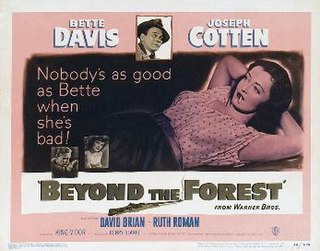
Beyond the Forest is a 1949 American film noir directed by King Vidor, and featuring Bette Davis, Joseph Cotten, David Brian, and Ruth Roman. The screenplay is written by Lenore Coffee based on a novel by Stuart Engstrand.

Shirley Ann Richards was an Australian actress and author who achieved notability in a series of 1930s Australian films for Ken G. Hall before moving to the United States, where she continued her career as a film actress, mainly as a Metro-Goldwyn-Mayer starlet. Her best known performances were in It Isn't Done (1937), Dad and Dave Come to Town (1938), An American Romance (1944), and Sorry, Wrong Number (1948). In the 1930s, she was the only Australian actor under a long-term contract to a film studio, Cinesound Productions. She subsequently became a lecturer and poet.
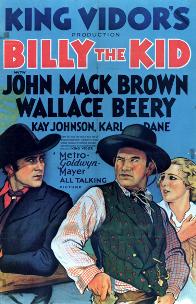
Billy the Kid is a 1930 American pre-Code Western film directed in widescreen by King Vidor about the relationship between frontier outlaw Billy the Kid and lawman Pat Garrett. In February 2020, the film was shown at the 70th Berlin International Film Festival, as part of a retrospective dedicated to King Vidor's career.
Leon Shamroy, A.S.C. was an American film cinematographer known for his work in 20th Century Fox motion pictures shot in Technicolor. He and Charles Lang share the record for most Oscar nominations for Cinematography. During his half-century career, he gained 18 nominations with 4 wins, sharing the record for wins with Joseph Ruttenberg.
Leslie Robert BurksA.S.C. was an American cinematographer known for his collaborations with Alfred Hitchcock.

Two Years Before the Mast is a 1946 American historical adventure film directed by John Farrow and starring Alan Ladd, Brian Donlevy, William Bendix, and Barry Fitzgerald. It is based on Richard Henry Dana Jr.'s travel book of the same name and was produced and distributed by Paramount Pictures.
Hurricane in Galveston is a 1913 American short documentary directed by King Vidor. It was Vidor's debut film as a director.

The Family Honor is a 1920 American silent drama-romance film directed by King Vidor and starring Florence Vidor. A copy of the film is in a French archive.
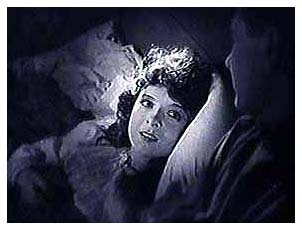
The Sky Pilot is a 1921 American silent drama film based on the novel of the same name by Ralph Connor. It is directed by King Vidor and features Colleen Moore. In February 2020, the film was shown in a newly restored version at the 70th Berlin International Film Festival, as part of a retrospective dedicated to King Vidor's career.

The Story of Seabiscuit is a 1949 American drama film directed by David Butler and starring Shirley Temple and Barry Fitzgerald in a semi-fictionalized account of racehorse Seabiscuit, the top money winner up to the 1940s. The screenplay was written by John Taintor Foote; it changes the names of the people involved but uses the racehorses' real names.

Bird of Paradise is a 1932 American pre-Code romantic adventure drama film directed by King Vidor and starring Dolores del Río and Joel McCrea. Based on the 1912 play of the same name by Richard Walton Tully, it was released by RKO Radio Pictures.

The Exquisite Sinner is a 1926 American silent drama film directed by Josef von Sternberg and adapted by Alice Duer Miller from the novel Escape by Alden Brooks. Starring Conrad Nagel and Renée Adorée, the Metro-Goldwyn-Mayer (MGM) never given a general release. No known print of the film has been recovered to date. Later that same year a second feature film Heaven on Earth, directed by Phil Rosen was released with the same cast and same sets, but a different screenplay. Rosen's version performed poorly at the box office. Sternberg reported, "the result was two ineffective films instead of one.” The American Film Institute Catalog Feature Films: 1921-30 by The American Film Institute.

Metro-Goldwyn-Mayer (MGM) originally announced a remake of the 1925 silent film Ben-Hur in December 1952, ostensibly as a way to spend its Italian assets. Stewart Granger and Robert Taylor were reported to be in the running for the lead. Nine months later, MGM announced it would make the film in CinemaScope, with shooting beginning in 1954. In November 1953, MGM announced it had assigned producer Sam Zimbalist to the picture and hired screenwriter Karl Tunberg to write it. Zimbalist was chosen because he had produced MGM's Best Picture-nominated Christians-and-lions epic Quo Vadis in 1951. The studio then announced in July 1954 that production would start in March 1955 with 42 speaking parts and 97 sets. MGM said Sidney Franklin would direct, that the script by Tunberg was finished, that shooting would occur in Rome and in Spain, and that Marlon Brando was up for the lead. In September 1955, Zimbalist, who continued to claim that Tunberg's script was complete, announced that a $7 million, six-to-seven month production would begin in April 1956 in either Israel or Egypt in MGM's new 65mm widescreen process. MGM, however, suspended production in early 1956.

















